How to Choose the Best Solar Panels for RV: Easy Guide for 2025
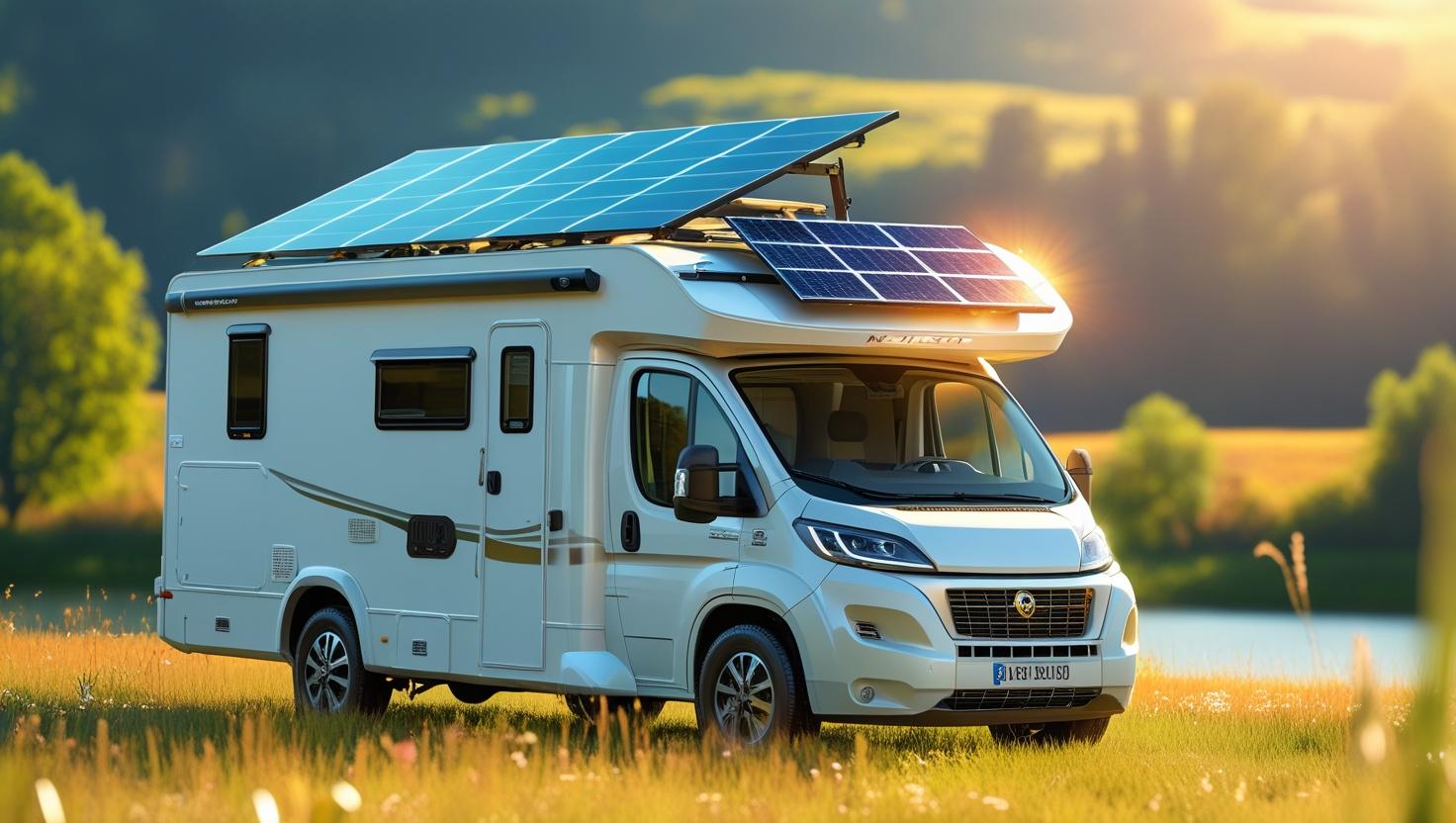
Learn to choose the best solar panels for an RV with this guide. Explore panel types, sizing, and installation advice for off-grid power.
Introduction
Solar panels are an excellent solution for RV owners looking to enjoy off-grid adventures powered by clean energy. However, with multiple panel types and options available, it can be confusing to choose the right solar panels for your RV.
In this guide, we’ll break down everything you need to know — from panel types and efficiency to sizing and installation tips — so you can confidently pick the best solar panels that fit your RV lifestyle.
Monocrystalline or polycrystalline can be recommended for your RV project, but if you have an RV with a curved roof, like an Airstream, flexible thin-film panels may be the way to go. Batteries: If you’re using solar panels for your RV, you’ll want to get some additional battery banks to store your solar energy.
Why Are Solar Panels Important for Your RV?
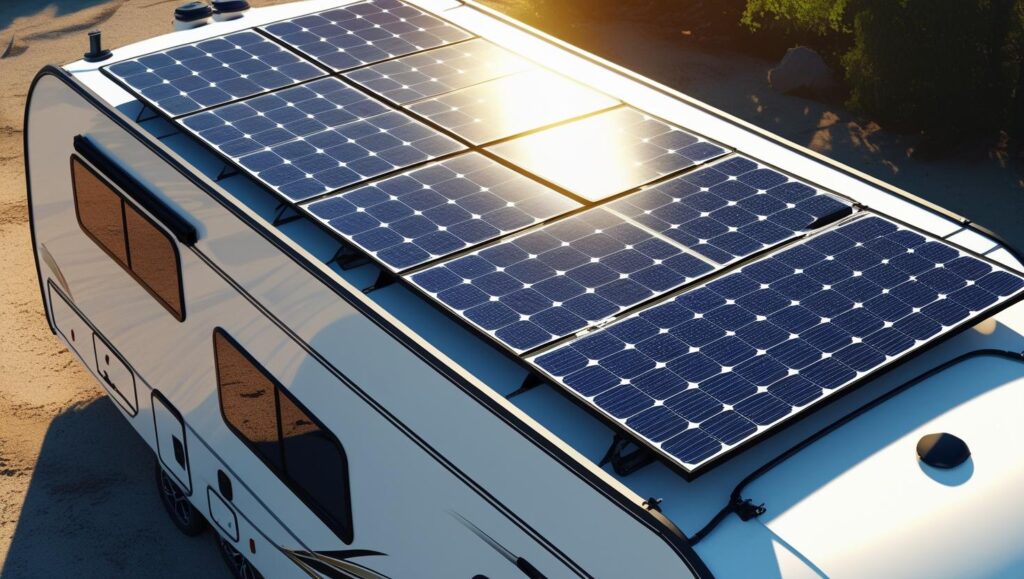
RV Solar Panel
Solar panels provide a reliable, quiet, and eco-friendly way to generate electricity on the road or at remote campsites. They enable you to power appliances like refrigerators, lights, fans, and electronics without relying on noisy gas generators or campground hookups.
Investing in solar panels means more freedom, cost savings, and a smaller carbon footprint while traveling.
Solar panels have become an essential addition to many RVs, offering numerous benefits that enhance your travel experience and independence.
Here’s why solar panels are so important for your RV:
1. Reliable, Off-Grid Power Anywhere
With solar panels, your RV can generate electricity wherever the sun shines, freeing you from reliance on campground hookups, noisy generators, or local power grids.
This is especially beneficial for boondocking (camping in remote locations) where no electrical connections are available. Solar panels provide a steady, quiet source of power that keeps your lights, fridge, water pump, and other appliances running smoothly off-grid.
2. Cost Savings Over Time
While the initial investment in solar panels and related equipment can seem high, they significantly reduce or eliminate the recurring costs of campground electricity fees and fuel for generators.
Solar power is “free” energy from the sun, and once your system is installed, your ongoing energy costs drop substantially. This makes solar panels an economical choice in the long run, especially for full-time RVers or frequent travelers.
3. Environmentally Friendly and Quiet
Solar panels convert sunlight into clean, renewable energy without emissions, reducing your carbon footprint compared to propane generators or campsite electricity often sourced from fossil fuels. They operate silently, improving your camping experience by eliminating noise pollution.
This quiet and clean energy is better for natural environments and wildlife, helping you enjoy nature responsibly.
4. Increased Freedom and Flexibility
By powering your RV independently, solar panels allow you to stay longer in remote or off-grid locations without needing hookups or generator use. You can camp in more diverse spots, enjoy privacy, and experience nature more intimately.
This increased freedom also means less planning around power availability and fewer restrictions on where you can stay.
5. Supports Modern RV Appliances and Electronics
Modern RVs come with numerous electrical devices, including LED lights, air conditioners, microwave ovens, TVs, and charging ports for smartphones and laptops. Solar panels help you meet these energy demands without strain. A properly sized solar system ensures your RV remains comfortable and functional, even when off-grid.
6. Low Maintenance and Long Lifespan
Solar panels are durable, require minimal maintenance, and typically come with warranties lasting 20-25 years. Once installed, you can rely on them for years with little effort, making them a hassle-free energy solution.
Types of Solar Panels for RVs
Choosing the right type of solar panel is a crucial step in building an efficient and durable solar system for your RV. Each type offers different advantages and limitations based on efficiency, flexibility, cost, and durability. Here are the main types of solar panels commonly used for RVs:
1. Monocrystalline Solar Panels
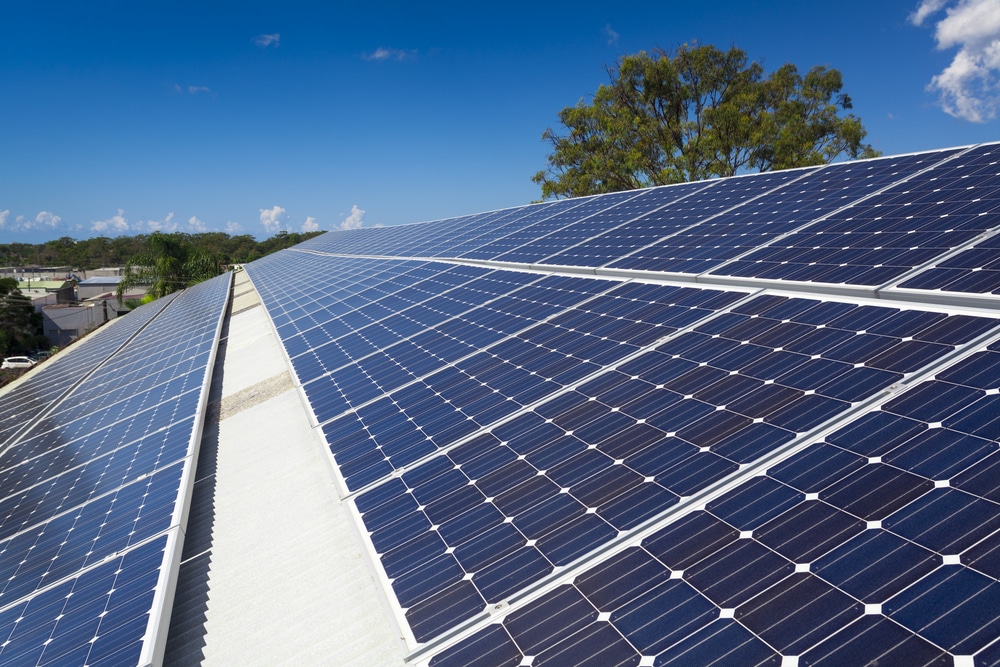
Monocrystalline Solar Panel
- What They Are: Monocrystalline panels are made from single-crystal silicon and are known for their uniform black appearance and high purity.
- Efficiency: These panels are the most efficient commercially available, typically converting 15-22% of sunlight into electricity.
- Advantages:
- High power output even in a limited space, making them ideal for RV roofs with limited surface area.
- Perform better in low-light conditions and at higher temperatures compared to other types.
- Longer lifespan and generally come with 25-year warranties.
- Considerations:
- Often more expensive upfront than other panel types due to their efficiency and production process.
- Best For: RV owners who need maximum power in a compact space and are willing to invest in higher-quality equipment.
2. Polycrystalline Solar Panels
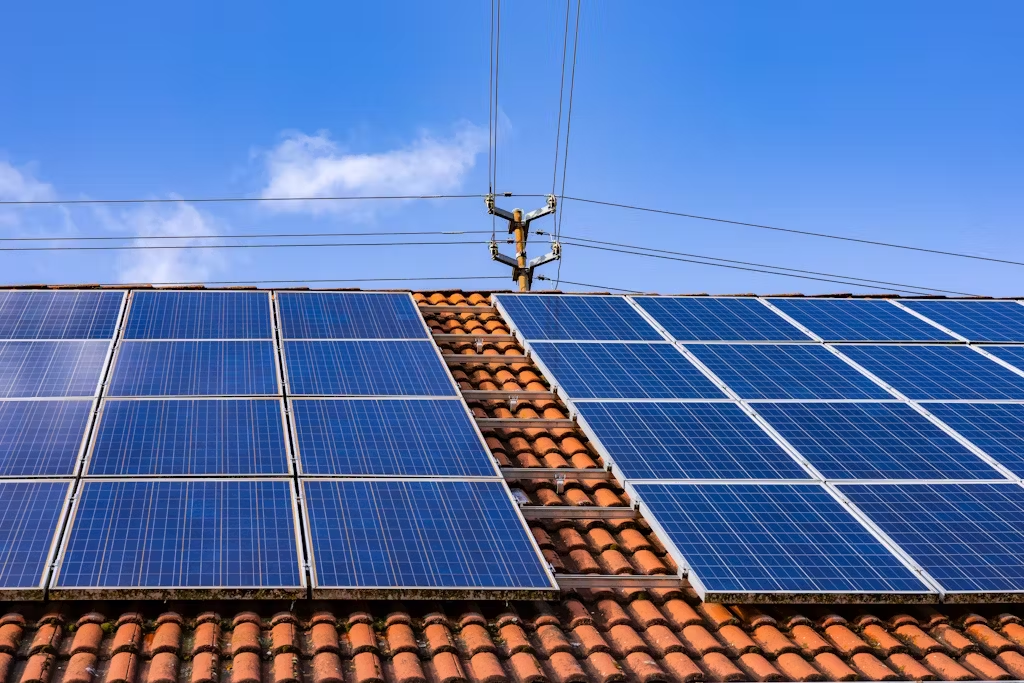
Polycrystalline Solar Panel
- What They Are: Polycrystalline panels are made from many silicon crystals melted together, giving them a distinctive blue color and speckled appearance.
- Efficiency: Slightly lower than monocrystalline, typically in the 13-16% range.
- Advantages:
- More affordable and widely available.
- Good performance in sunny, consistent light environments.
- Considerations:
- A larger panel surface area is required to produce the same wattage as monocrystalline.
- Less efficient in low-light or high-temperature conditions.
- Best For: Budget-conscious RV owners with larger roof space who want a reliable, cost-effective solar solution.
3. Flexible Solar Panels
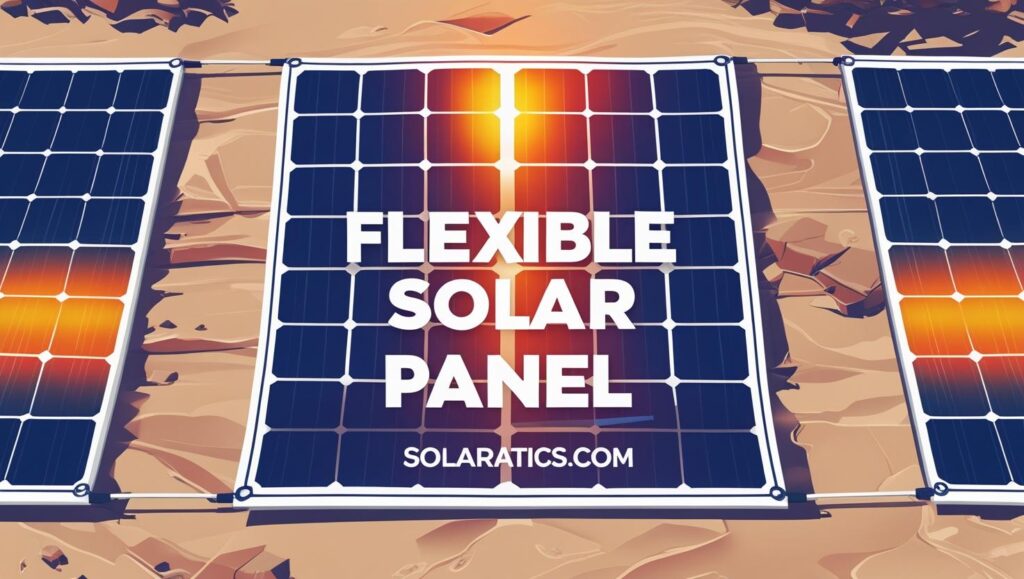
- What They Are: Flexible panels are made using thin-film or flexible photovoltaic materials that can bend to fit curved surfaces.
- Efficiency: Generally lower than rigid panels, ranging between 10-17% depending on technology.
- Advantages:
- Lightweight, making them easy to handle and install.
- Can contour to curved or uneven RV roofs, offering installation versatility.
- Less likely to be damaged by impacts or vibrations common in RV travel.
- Considerations:
- Higher cost per watt compared to rigid panels.
- Often less durable over time, and may degrade faster.
- Typically less power output in the same area compared to rigid panels.
- Best for: RV owners with curved roofs or those seeking a lightweight, flexible solution for easy installation and minimal roof penetration.
Choosing the Right Panel Based on Your RV and Needs
- If you have limited roof space and want the most power, monocrystalline panels are your best bet despite the higher cost.
- If budget is your primary concern and you can dedicate more roof space, polycrystalline panels offer good value.
- For RVs with curved roofs or those sensitive to weight, flexible panels offer convenience and ease of installation.
By understanding these types, you can select the solar panels that best match your RV’s design and your off-grid power needs, ensuring efficient and reliable solar energy throughout your travels.
Key Factors to Consider When Choosing Solar Panels
- Efficiency: Look for high-efficiency panels if your roof space is limited.
- Size and Weight: Ensure panels fit your roof without exceeding weight limits.
- Durability: Panels should be rugged and weather-resistant to withstand travel conditions.
- Power Output: Select panels with wattage that matches your daily energy consumption.
- Warranty: Choose trusted brands with generous warranties (usually 10-25 years).
Selecting the right solar panels for your RV involves more than just picking the highest wattage. To ensure your solar power system meets your needs efficiently and reliably, here are the key factors you should carefully consider:
1. Panel Efficiency
- What It Means: Efficiency indicates how well a solar panel converts sunlight into usable electricity. Higher efficiency means more power output from a smaller panel surface.
- Why It Matters for RVs: Roof space on an RV is limited, so efficient panels help maximize power generation without needing large arrays. This is especially important for smaller RVs or those planning extensive off-grid use.
- Typical Range: Monocrystalline panels offer 15-22% efficiency, polycrystalline 13-16%, and flexible panels around 10-17%.
- Tip: Opt for higher efficiency panels if roof space is at a premium.
2. Panel Size and Weight
- Why Size Matters: Your RV roof can only accommodate panels of certain dimensions without covering vents, skylights, or causing structural issues.
- Weight considerations: A heavier solar panel system adds to your vehicle’s overall weight, which may affect fuel economy and handling. Flexible panels are lighter, while rigid panels weigh more but often last longer.
- Tip: Measure your available roof space and consider your RV’s weight limits before selecting panel size and type.
3. Durability and Weather Resistance
- What to Look For: RVs are exposed to harsh outdoor conditions—road vibrations, hail, rain, dust, and UV rays. Robust frames, tempered glass, and quality sealing help panels withstand these stresses.
- Impact on Longevity: Durable panels mean fewer repairs and replacements, making your system more cost-effective over time.
- Tip: Choose panels with strong warranties (20+ years) and certifications indicating resistance to environmental factors.
4. Power Output (Wattage)
- Matching Power Needs: Determine your daily energy consumption by listing your appliances and devices and their usage duration. Your solar panels’ combined wattage should cover or exceed your regular energy needs.
- Typical RV Systems: RV solar setups usually range from 200 watts to over 600 watts total capacity, depending on usage and roof space.
- Tip: Add a margin to your wattage to account for cloudy days, shading, and system losses.
5. Warranty and Brand Reputation
- Importance of Warranty: Warranties protect your investment by covering panel defects and performance degradation. Longer warranties indicate manufacturer confidence in product durability.
- Reputation and Support: Established brands with positive customer reviews offer reliable products and better customer service.
- Tip: Research brands, check warranty terms (power output guarantees), and opt for those with a proven track record in RV or portable solar panels.
6. Cost and Budget
- Balancing Cost and Quality: Higher efficiency and durable solar panels often cost more initially but save money over time with better performance and longevity.
- Consider Total System Cost: Include cost of panels, mounting hardware, wiring, charge controllers, batteries, and installation.
- Tip: Avoid choosing panels solely based on price; prioritize value and system compatibility.
7. Compatibility With Existing RV Systems
- Check Electrical Compatibility: Ensure chosen panels integrate well with your RV’s charge controller, battery bank type, and inverter specifications.
- Tip: If upgrading an existing system, confirm voltage and wiring match to avoid costly modifications.
Summary Table of Key Factors
| Factor | Why It Matters | Tips |
|---|---|---|
| Efficiency | Maximizes power output per panel area | Choose high-efficiency panels if space is limited |
| Size and Weight | Fits your RV roof and weight limit | Measure roof space and RV weight capacity |
| Durability | Withstands road and weather conditions | Select panels with strong frames and warranties |
| Power Output (Wattage) | Meets your daily energy needs | Calculate usage and add a buffer |
| Warranty & Brand | Protects investment and ensures support | Choose reputable brands with long warranties |
| Cost | Balances upfront and long-term value | Consider total system cost, not just panel price |
| System Compatibility | Ensures seamless integration with your RV setup | Verify voltage, controller, and inverter compatibility |
By carefully evaluating these factors, you’ll choose solar panels that deliver consistent, reliable power tailored to your RV lifestyle, ensuring a smooth, worry-free off-grid experience.
How to Size Your RV Solar System: A Step-by-Step Guide
Estimate your daily power usage by adding up the wattage of all appliances and the hours used. Then, divide by expected sunlight hours to find the needed panel wattage.
Most RVs use between 200W–600W total solar capacity, but this varies based on individual use.
Sizing your RV solar system correctly is essential to ensure you generate and store enough power to meet your daily energy needs without wasting money on oversized equipment. Here’s a detailed guide to help you determine the right solar panel size for your RV:
1. Calculate Your Daily Energy Consumption
Begin by listing all the electrical appliances and devices you plan to use in your RV. For each item, note:
- Wattage (power rating): Usually listed on the device or in its manual.
- Estimated daily usage time: How many hours per day do you expect to use the device?
Multiply the wattage by the hours of use to get the watt-hours consumed per day for each device.
Example:
| Appliance | Wattage (W) | Hours per Day | Watt-Hours (Wh) per Day |
|---|---|---|---|
| LED Lights | 20 | 5 | 100 |
| Refrigerator | 60 | 10 | 600 |
| Laptop Charger | 50 | 4 | 200 |
| Water Pump | 40 | 1 | 40 |
| Fan | 30 | 6 | 180 |
| Total | 1,120 Wh |
2. Consider Energy Losses and Inefficiencies
Real-life solar systems have losses due to factors such as:
- Charging and discharging batteries
- Wiring resistance
- Inverter efficiency
A good rule of thumb is to add about 20-30% more capacity to your calculated daily watt-hour needs to compensate for these inefficiencies.
Example:
If your total is 1,120 Wh, multiply by 1.3 (30% extra) = approx. 1,456 Wh is needed daily from your solar panels.
3. Determine Available Sunlight Hours
The amount of effective sunlight your RV solar panels receive each day will influence your panel sizing. This depends on:
- Geographic location
- Season
- Weather conditions
On average, most places get around 4 to 6 peak sun hours daily.
4. Calculate Required Solar Panel Wattage
Divide your adjusted daily watt-hour needs by the average peak sunlight hours to find how many watts of solar panels you need. Required Solar Wattage=Daily Watt-Hours NeededPeak Sunlight HoursRequired Solar Wattage=Peak Sunlight HoursDaily Watt-Hours Needed
Example:
1,456 Wh ÷ 5 hours = 291 watts of solar panels.
This means you should have solar panels totaling around 300 watts to meet your daily energy consumption under average sunlight conditions.
5. Factor in Battery Capacity
To store enough energy for cloudy days or nighttime use, your battery bank capacity should support at least 1.5 to 2 times your daily energy usage in watt-hours.
Example:
If you use 1,120 Wh per day, aim for a battery capacity of 1,680 Wh to 2,240 Wh.
Make sure your battery type (lithium, lead-acid) and depth of discharge are considered in this sizing for accurate capacity.
6. Plan for Future Expansion
If you plan to add more appliances or spend longer off-grid periods, consider sizing your solar array and battery bank a bit larger. This avoids having to upgrade your system too soon.
Sizing your RV solar system this way ensures you have reliable power tailored to your requirements — not too small to leave you short of energy, nor too large to waste money and space.
Installation Tips
- Place panels where they get maximum sunlight with minimal shading.
- Use appropriate mounting hardware for secure, safe roof attachment.
- Connect components with correctly sized, weatherproof wiring and connectors.
- Consider professional installation if unfamiliar with electrical systems.
Conclusion
Choosing the best solar panels for your RV depends on efficiency, size, durability, and power needs. Monocrystalline panels suit tight spaces with high power needs; flexible panels offer lightweight options for curved roofs. Proper sizing and quality installation ensure reliable solar power on your travels.
FAQ
Yes, with basic electrical skills, though professional help is advised for safety and warranty.
It depends on your energy use and available roof space; commonly, 200-600 watts works.
They offer easy installation on curved roofs, but cost more and are less efficient.
